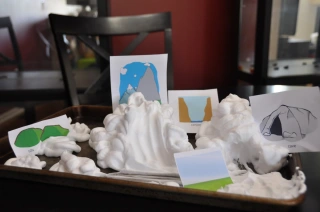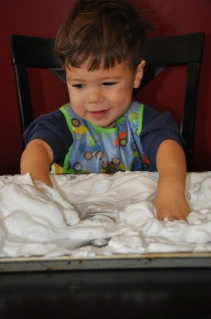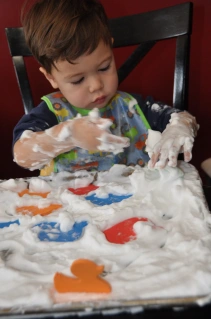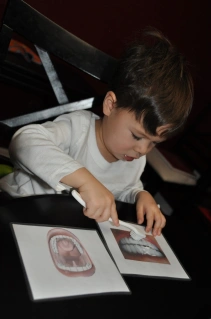We’ve finally wrapped up a series on the 7 days of creation and I am going to try and organize it into posts. Let me just say it took us A LOT longer than 7 days! I basically used the creation story to focus our learning time. I never intended to get through it in one week since I also used this as the backdrop for a lot of academic activities. I was developing and organizing as I went… as well as dealing with pregnancy, lots of travelling, lazy weeks, and distractions… so I was ok with moving slowly through it all. You could pick and choose activities from the entire series to complete in one day, one week or one month depending on what fits your schedule. You’ll see that what fit our schedule was spreading it out over months (we started last summer and ended in the winter).
This was not our only Bible lesson during these months. But it became a great backdrop for so many other Bible stories we learned during the same time.
My goal was to teach J about the greatness of God as expressed through His creation (or honestly to breach the surface of that topic, since the greatness of God simply can’t be covered in its entirety even in a lifetime of learning!). I also wanted to couple the greatness of God with the truth that this same God created, knows, loves, helps, and has plans for J too…. a truth that I just find amazing.
My current plan is one Creation post each week, so I should be finished 7 weeks from today. We’ll see how long each post becomes. I might have to split some up to simplify things a bit. I used crafts, games, discussions, memory verses, books, and whatever came to mind that would work for each day of creation.
I hope you enjoy and find some of it useful!







 Oh and his Knuffle Bunny series is really cute too. That’s actually the series that got us hooked on Mo Willems. Parents especially will find this series humorous. “Blaggle Flaggle” mom and dad, “Blaggle Flaggle!”
Oh and his Knuffle Bunny series is really cute too. That’s actually the series that got us hooked on Mo Willems. Parents especially will find this series humorous. “Blaggle Flaggle” mom and dad, “Blaggle Flaggle!”









